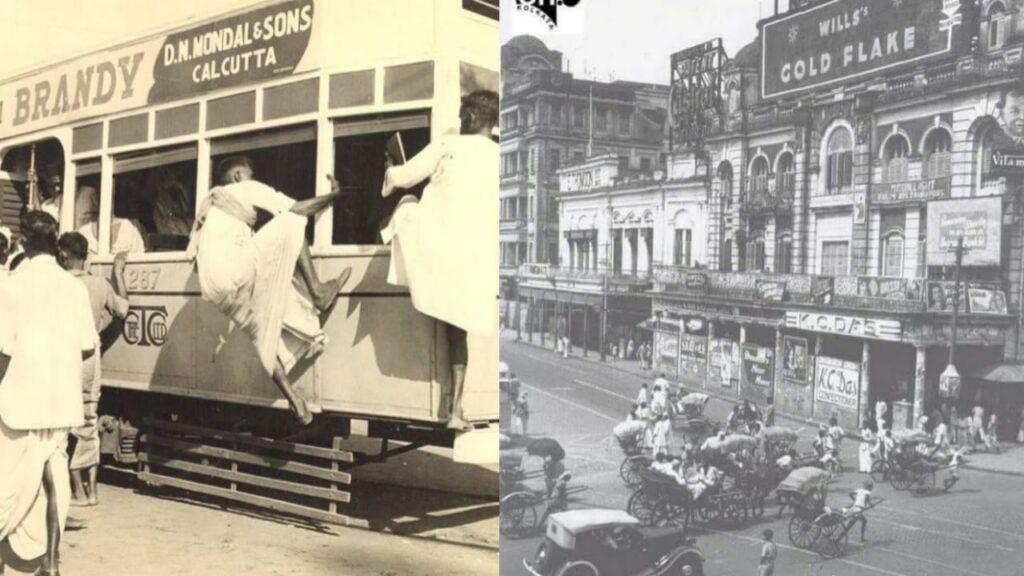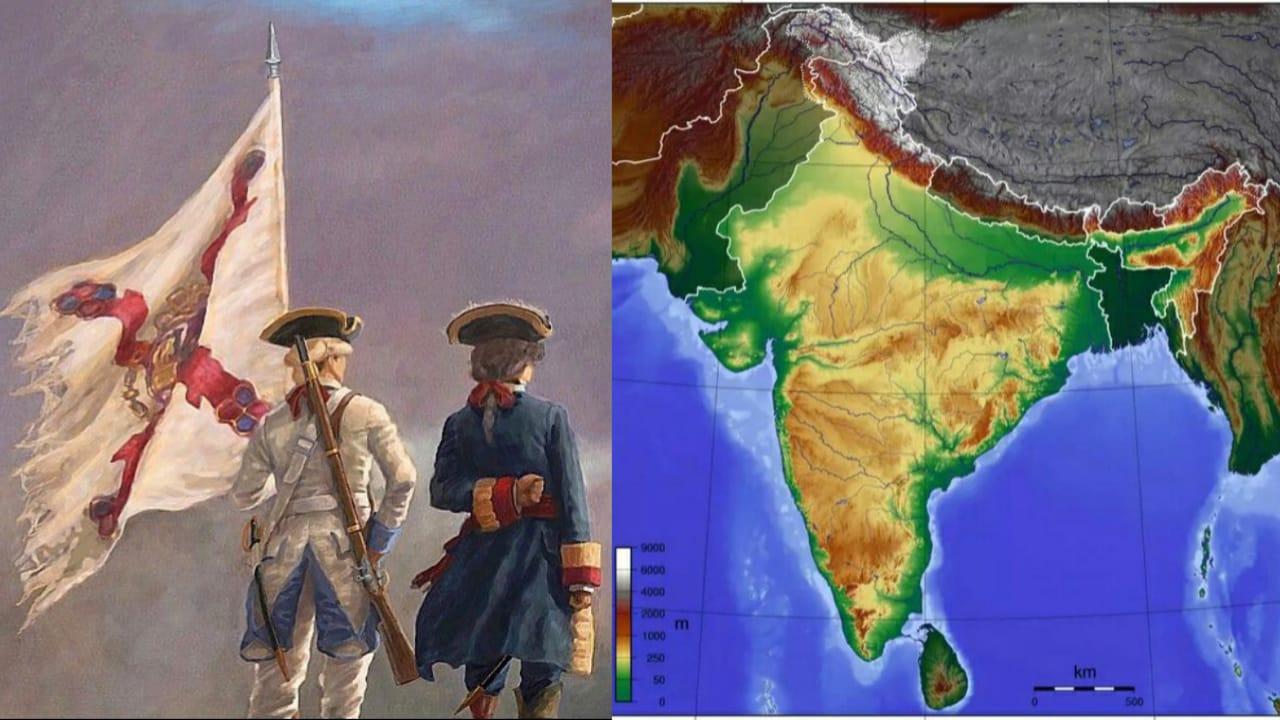Portuguese European colonies in India
European colonies in India: When Vasco da Gama reached India on May 27, 1498, he was welcomed by the Zamorin of Calicut. On the persuasion of the Portuguese, the Zamorin allowed them to live and trade in his kingdom. The Arab traders did not like the arrival of the Portuguese in India at all.
European colonies in India They started conspiring against them, but despite the opposition of the Arabs, the Portuguese established their trading centers in Calicut, Kochig and Kalanore. The Portuguese started harassing the Arabs and successfully faced their protests and rebellions. He began to nexus with the states of South India, especially the ruler of Cochin, who was the Zamorin’s enemy.
The Zamorin could not tolerate their actions. Its prosperity depended on Arab traders. Hence Zamorin attacked the Portuguese in Cochin, but was defeated. This increased the influence of the Portuguese. The first governor of the Portuguese controlled territories in India was De Almeida (De Almeida 1505-1509). He was a big supporter of the ‘Blue water’ policy. European colonies in India
According to this, only the Portuguese dominance over the sea could protect their trading markets and warehouses in India. Almeida and his son were defeated and killed by the Egyptians in 1509 AD. The second Portuguese governor in India was Alphonse de Albuquerque (1509–1515230). He first came to India in 1503 AD as a naval commander.

Due to his satisfactory work, he was made the Viceroy of this place in 1509 AD. He was the real founder of Portuguese dominance in India. Morse Stephens has mentioned four things while clarifying his policy:
- (a) Albuquerque wanted to capture some places necessary for trade and wanted to rule over them directly.
- (b) To ensure permanent Portuguese population in India, he encouraged the Portuguese to marry Indian women.
- (c) When this task also seemed impossible to him, he expressed his desire to make the local traders accept the supremacy of the Portuguese king and take gifts for himself, but the Muslim repression policy of Albuquerque was extremely pitiful.
Anukak was a great conqueror and administrator. In 1510 AD, he captured the famous monkey of Bhijapur and made it the head office of the Portuguese Empire. He conquered Malacca and the Persian island of Ormuz and built a fort in Cochin with the permission of the Cochin king.
Muslims were neglected in administrative work and Hindus were welcomed. Hindu Panchayats were allowed to remain and many schools were opened. Albuquerque encouraged mixed marriages of Portuguese with Indian women. Albuquerque died in 1515 AD. His body was taken to Goa.
By the time of Albuquerque’s death in 1515 AD, the maritime power of the Portuguese had become dominant. They had taken over the coastal areas. His power increased. He captured DIu Bassein in 1534 AD. In 1538 AD he conquered Daman. That very year he got permission to open a factory in Goa.
Salsette, Chaul, Thome and Hooghly in Bengal also fell into their hands. They also had control over most of Ceylon. In 1571 AD, the rulers of Bijapur, Ahmednagar and Calicut made an organized effort to drive out the Portuguese.
From the beginning of the 17th century, the power of the Portuguese began to decline. One special reason for this was that in 1508 AD, during the reign of King Philip II of Spain, Portugal was made a part of Spain. The situation in Spain was not good at that time. Therefore he could not protect the commercial interests of the Portuguese.
As a result, Portugal lost its occupied territories one by one. The Dutch drove them out of Ambolyra. In 1620 AD, the Iranian government took away the territory of Omanj. The Dutch captured Malacca in 1640 AD. All the colonies except Goa, Daman and Dith were lost from their hands. There were many reasons for the failure of the Portuguese in India.
First, after the death of Albuquerque in 1515 AD, no powerful Viceroy from the Portuguese government came to India. After Albuquerque, Noone, Dr. Cunha and Jaso de Castro came to India. All of them were weak. As a result, the Portuguese Empire started disintegrating during his time.
Second, the administrative system of the Portuguese had ended. Officers were paid less. Hence he used to take bribe without any hesitation. The selfish and corrupt Portuguese officials did not pay any attention to the welfare or interests of the people. As a result his administration became unpopular.
Thirdly, the religious policy of the Portuguese was also opposed. He made tireless efforts to convert Indians to Christianity and established a religious court (Inquisition). They started torturing non-Christian people.
In 1540 AD, all the Hindu temples of Goa were demolished. At this time the followers of Saint Francis reached Goa. His religious propagation started rapidly. His harsh and cruel behavior caused great anger and dissatisfaction among the people. His empire could not survive in such a situation.
Fourth, the Portuguese did not face any opposition in establishing the Portuguese Empire in India in the early 16th century. But as the position of the Mughal Empire became stronger, opposition began to arise. Shahjahan strongly opposed them and snatched Hooghly from them. Many Portuguese were killed. Native powers, such as the Mughal Empire, Bijapur, Marathas, etc. also opposed the Portuguese. Hence his downfall became inevitable.
fifth, brazilian After finding out, Portugal focused its special attention towards Brazil. His attention was diverted from India. The reason for this was also that Portugal had less resources to conquer a huge country like India.
Sixth, the dominance of Dutch, French, English etc. and other European companies increased in India. The Portuguese failed to confront them successfully.
Seventh, in 1580 AD, during the reign of Philip II, Portugal and Spain merged into one. Portugal began to let Spain participate in European politics. At this time Catholic Spain was engaged in religious wars with Protestant England and Holland.
Neglected the trading interests of the Portuguese in Spain. Lisbon, which was once the warehouse of Europe, has now become unimportant. Spanish officials we… (Sir Thomas Roe) tried to instigate the Mughals against the Dutch.
The capture of Golconda by Aurangzeb dealt a blow to the Dutch trade on the eastern coast. They also suffered losses in Shivaji’s plunder of Surat (1664). In the 17th century, their conflict with the British became very intense and in 1759 AD they were badly defeated in the battle of Veda.
The British took revenge of the Massacre of Amboiyna in 1623 AD, because after this tragic incident the British were forced to leave the spice island and they mainly took refuge in India. Now the Dutch concentrated their trade in places like Malaya, Java, Sumatra etc. of South-East Asia. He stopped opposing the British in India.
In India, they had the territories of Nagapattinam on the Madras coast and Visura in Bengal under their control. From the beginning till the end, the position of the upper castes in India was not important.
Arrival of British Colony in India
After Portuguese and Dutch, Danish traders also came to India. They established a colony in Travancore in Thanjavur district. In 1676 AD they captured Shrirampur, but the Dane traders could not stay in India for long. They sold their Indian colonies to the British. own
Like the new European races like Portuguese, Dutch, Danes etc., the British also arrived in India. In 1578 AD, an English sailor named Sir Francis Drake robbed a Portuguese ship bound for Lisbon. In this loot, he found some maps which helped the British to know the sea route of India for the first time.
The national crisis of the British came to an end after the victory of the Spanish Armada in 1588 AD. There was a desire to do independent trade in remote areas. In September 1599, a proposal was approved under the chairmanship of the Lord Mayor in which it was decided to create an institution for direct trade with India.

On December 31, 1600, Queen Elizabeth granted a charter to London merchants and their governors trading with eastern countries. By this charter, the East India Company was established in 1600 AD. The company got permission to trade with eastern countries. The first English ship ‘Hector’ reached Surat in 1608 AD. European colonies in India
The ship’s captain Hawkins reached the Mughal Emperor Jahangir agreeing with him, carrying with him a letter from the British King James. At that time no one in Jahangir’s court even imagined that the weak and semi-civilized Englishman from the far west, who was kissing the emperor’s feet to get permission to do business in India, would one day become the arbiter of India’s destiny.
Will go. In those days, earning money from business was considered a small task and Indian kings considered it their duty to protect the business class and encourage business in their kingdom European colonies in India.
On February 6, 1613, through a royal decree, the British were given permission to open a colony in Surat for trade and to keep an ambassador for Britain in the Mughal court. Sir Thomas Roe came to the Mughal court in 1615 AD.
He was more cunning and tactful than Hawkins. With his political acumen he obtained permission to open English offices in India. European colonies in India As a result, in 1631 AD a fish trade was opened. Factories were opened in Balasore and Hariharpur in 1633 AD.
In 1640 AD, the British bought Madras from the king of Chandragiri and built a fort named St. George there. A factory was established in Hooghly in 1651 AD. In 1668 AD, the company got Bombay from Charles II at an annual rent of 10 pounds.
Jahangir, Shahjahan and Aurangzeb had given nominal concessions to the British traders. The number of British trading houses and factories increased in Bengal and South India. Under the guise of business, they also started taking part in the intrigues of politics.
Cunning and dishonest British businessmen started cheating the simple people and businessmen of India. When this complaint reached Aurangzeb’s ears, he immediately ordered to confiscate their business houses and expel them from the country. The factories of Surat, Qasim Bazar and Vizgam were snatched from them, but the British were very cunning.
He pleaded for forgiveness from the Mughals. Trading facilities were returned to them. Growth in trade and influence of the East India Company (1600-1744) Initially, when the East India Company was primarily a trading company, it had to take the help of Indians in carrying out its operations European colonies in India.
Indians served the Company in various capacities such as contractors, moneylenders, tradesmen, clerks, assistants etc. and sold their goods to the Company. Sometimes the company also gave advance amount for the purchase of these goods.
This advance amount was given to weavers or producers of other goods. The goods were deposited in depots or warehouses and were kept in warehouses or warehouses. Here their quality or quantity was checked. Fine goods were kept in warehouses in Calcutta from where they were exported.
Dadani businessmen employed brokers who employed other brokers. They would go to the villages of weavers or producers and inspect the supply of goods and fix their prices. For this he used to get commission of 2 to 4 percent of the value of the goods European colonies in India.
The Sharraf or treasurer was an important part of the native business community. Indian and foreign traders had daily needs from the Sharifs because they got coins from him. Cashiers or moneylenders used to transact money. 900 types of coins were in circulation in the country European colonies in India. The cashier used to do the work of weighing, identifying etc. Later, cashiers started lending money and also doing banking work.
The business class had a monopoly in internal trade. They traded in roan, vermilion, gunpowder etc. and also sold tobacco, hemp, old iron etc. There were some licensed businessmen who manufactured liquor. With the establishment of Fort St. George in Madras, the British entered into business there. They started employing Indians for their commercial and administrative work.
The company employed private traders, whose job was to buy goods exported to England and sell goods imported from England. In Madras, the main traders also dealt with rupees. Along with him, other businessmen used to receive advance amount from the company which was given to weavers, Englishmen, producers etc.
The ordinary Indian businessman who worked as an agent of the company was called an interpreter, because he knew two languages. Some of the businessmen were selected as farmers, who were given leases for the production of betel leaves, tobacco etc. He also collected land revenue for the company.
Bombay developed progressively during the rule of the Company. In 1668 AD, the population there was ten thousand, which increased to one and a half lakh in 1701 AD. In 1668 AD, there were Kolis, Bhandaris, Portuguese, Indian Christian Kunbis, Mahars, and some Parsis in Bombay European colonies in India.
The arrival of the British encouraged trade. As a result, weavers, craftsmen, businessmen etc. started coming and settling here. Came to Ballia from Gujarat. East India Company reign A trend of urbanization was visible. With this came changes in the traditional society.
The old business class partly merged with the new business class. Bombay was one of the important trading centers of India. European colonies in India From here ships used to go to Basra, Muscat, Oman and other ports of the Persian Gulf for trade. Pearls, raw silk, wool, dates, dry fruits, rose water, etc. were sold to the traders there.
Gold, medicines and honey were imported from Arabia. Cotton, silk, muslin, pearls, diamonds, ivory, sandalwood, round chilli etc. were produced in different parts of India. These were traded by the ships of European and native traders based in Bombay.
They had no connection with the business of the East India Company. Among the exported goods were English woolen cloth, copper, iron, glass etc. Native traders used to buy them from Company traders in Bombay or other parts of India. Cotton was brought on boats from Surat, Bharaunch, Ahmedabad which was sent by ships from Bombay to Madras, Bengal and China.
The Portuguese from Goa, Daman and Europe used to do small business in Bombay. At that time, the coastal regions of Coromandel and Malawar used to send cotton, round peppers, medicines, dry fruits, tin etc. to Bengal as far as the Persian Gulf, Arabian Sea, even Manila, China and the African coast.
He used to import many trade items like opium, cotton clothes, rice, red chillies etc. from Bengal. Bengal also exported wheat and sugar to other parts of Asia.
Summary
Golden Bird India has had trade relations with western countries since ancient times. Before the 15th century, this trade was carried out through three ports: Asia via the banks of the Oxus River, the Caspian and Black Seas, the Mediterranean Sea via Syria and Egypt via the Indian Ocean and the Red Sea.
With the rise of the Ottoman Empire in the 15th century, Turkey took control of all three trade routes. Due to this, business came to a standstill. With the closure of ancient trade routes, the search for new trade routes began. In 1487 AD, Bartholomew Diaz discovered the Uttamasha Antropa route.
On May 27, 1498, a Portuguese sailor Vasco da Gama reached Calicut situated on the Malabar coast of India via Uttamasha Cape. As soon as the sea route to reach India was discovered, European tribes started arriving. The Portuguese, Dutch, Danes, English and French all came here.
Initially his aim was to do business, but gradually he started taking interest in the politics here as well. There was a conflict between them in terms of gaining power. In the end the British were successful and became the masters of India’s destiny.
Which was the first European company in India ?
East India Company, which came to India in 1600 to increase trading activities in India and built its first trading settlement

